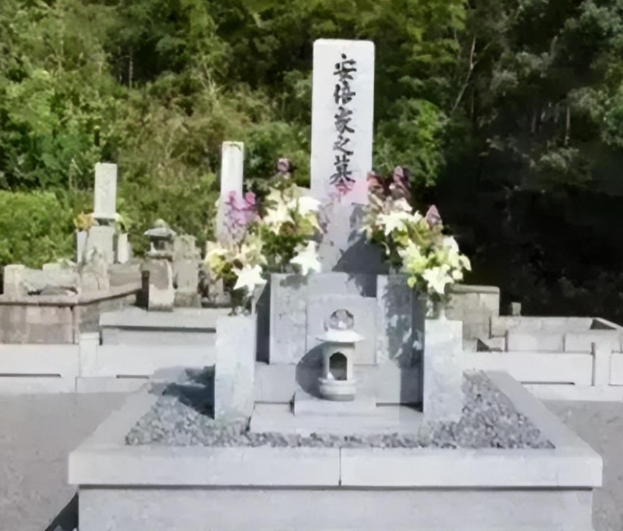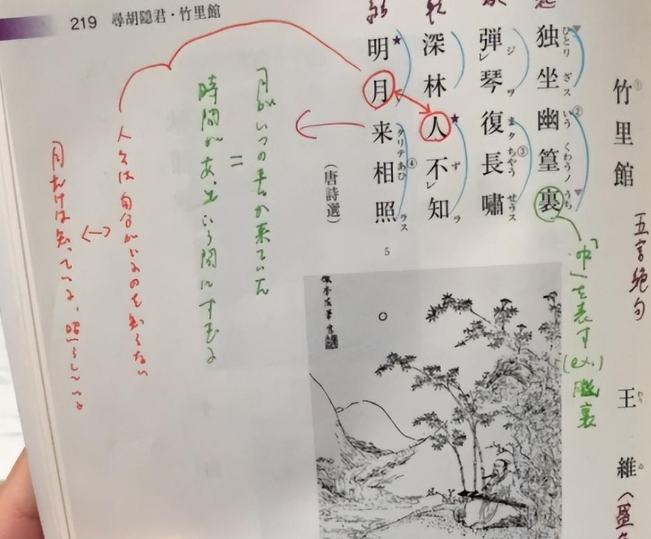Shinzo Abe Was Japanese, So Why Are Chinese Characters Engraved on His Tombstone?
On July 8, 2022, the assassination of Shinzo Abe, Japan’s former Prime Minister, deeply saddened many Japanese citizens. However, when Shinzo Abe was laid to rest, eagle-eyed netizens noticed that his tombstone was inscribed with Chinese characters.
Given that Abe was a former Prime Minister of Japan, it would seem logical to inscribe his tombstone in Japanese. So why use Chinese characters? Could this lead to misunderstandings among foreigners?

The Origin of Japanese Writing
The use of Chinese characters on Shinzo Abe’s tombstone is quite normal in Japan. One reason is the Japanese belief that Chinese characters should be used in solemn occasions.
Events like Abe’s funeral are considered such occasions, similar to weddings and many other circumstances. Chinese characters, with their square and upright form, convey a sense of solemnity and dignity, which the Japanese language, perceived as less formal, cannot fully emulate.
Thus, not only for Shinzo Abe but for many Japanese, Chinese characters are used for inscriptions on tombstones. However, the inscription “Abe Family Tomb” seems unusual, as if suggesting the entire family is buried there.
The resemblance between the Chinese characters for “tomb” (冢) and “family” (家) might suggest a transcription error when adopting Chinese characters into Japanese, or it might reflect a burial custom that encompasses the concept of “family.”
Besides solemn occasions, some Japanese prefer using Chinese characters in text messages to save time. A few characters can convey a message that would require multiple lines of kana, with possibly less precision.
Given the limitations of hiragana, some expressions cannot be conveyed, necessitating the use of katakana for loanwords, directly transliterated from English.
For example, the character “dragon” was not originally in Japanese. After encountering the English word “dragon,” they adopted “ドラゴン” (doragon), pronounced similarly to its Chinese pinyin counterpart.

The widespread use of Chinese characters in various contexts in Japan stems from the origins and evolution of the Japanese language from Chinese characters.
Japan’s history, starting from the 6th century BC and spanning just over 2,600 years, pales in comparison to China’s five millennia. Without its own language culture initially, Japan, upon discovery by Chinese dynasties, became a tributary state.
During the Tang dynasty’s prosperity, Japan sent envoys to learn about language and culture, adopting Chinese characters and developing a complete language system.
However, this did not last long. As Chinese characters evolved, Japan, which had learned clerical script, found itself unable to keep up with the changes, leading to the creation of hiragana and katakana to fill in the gaps. Still, a large part of their language system is based on Chinese.
Lu Xun’s Influence in Japan
Despite efforts to de-sinicize, Chinese cultural influence is deeply rooted in Japan. Take, for example, Lu Xun, a revered figure in both China and Japan, whose works like “My Old Home” and “Mr. Fujino” are included in Japanese textbooks, studied by every middle school student.
High praise for Lu Xun among Japanese luminaries is abundant. “Mr. Fujino,” recounting memories of Lu Xun’s time studying in Japan, had a significant impact on Japanese academia, touching on modern international societal differences.
Nobel laureate Kenzaburo Oe credited Chinese literature, including works by Lu Xun and Yu Dafu, as foundational to his success. Oe’s mother believed Lu Xun and Tagore were the most deserving of the Nobel Prize in Literature, even more so than her son.
Yoshikawa Kojiro, recipient of the “Confucian Prize,” equated the significance of Confucius and Lu Xun in representing Chinese civilization and culture. This high esteem for Lu Xun indicates his popularity in Japan.
Even Japan’s prestigious Tohoku University places Lu Xun at the forefront in its entrance exams, ranking above Nobel laureates among its alumni.
Not just Lu Xun, but ancient Chinese poetry, like “Quiet Night Thoughts,” is also studied in Japan, along with classical texts such as “On Teachers,” “The Fu of the Red Cliffs,” and “The Man Who Was Selling Spears,” indicating the deep-seated influence of Chinese culture.
The Sinosphere
Not only Japan but Korea and several Southeast Asian countries are part of the Sinosphere, having been influenced by Chinese culture due to their historical status as tributary states.
From adopting Confucianism in Vietnam to the use of Chinese characters in Korea and Vietnam, these countries have incorporated Chinese cultural elements into their own, despite later efforts to adopt their own writing systems or languages.
In conclusion, Shinzo Abe’s tombstone inscribed with Chinese characters is understandable given the deep cultural ties between Japan and China. The presence of Chinese characters in other Asian countries is a testament to the enduring influence of Chinese culture.